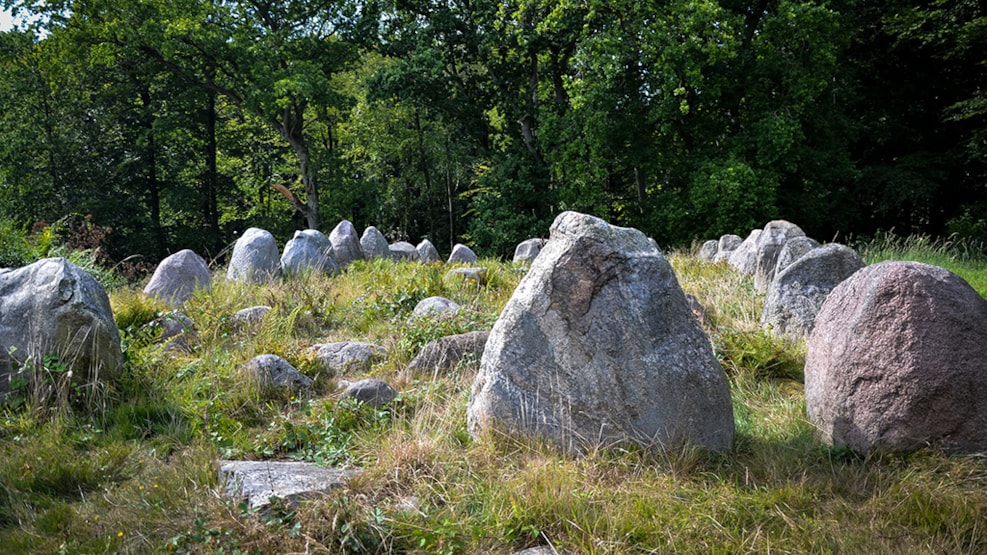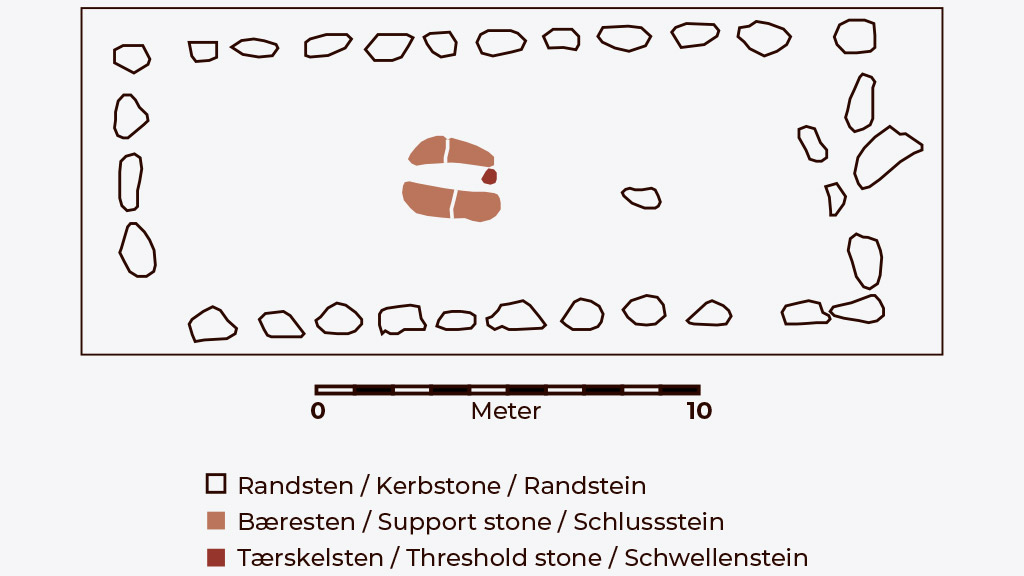
Karsskov long dolmen
Long dolmen in Karskov with 25 standing kerbstones
The Neolithic long dolmen is 20 m long and 8 m wide. In the centre of the dolmen is a chamber built of 2 large support stones with a lower threshold stone in the east. To the west, a threshold stone is missing, as is the chamber’s “lid” cap stone. The edge of the grave is bounded by an almost completely preserved chain of kerbstones.

A single support stone from another chamber can be seen in a trench to the east of the central chamber. A simi-lar burial (without stones) can also be seen to the west of the stone chamber. This could be the last traces of a third chamber or a looting hole made by grave robbers.
The mound is built up with a strong stone packing in the centre and an outer packing of clay, stone and topsoil. In several places, quite large stones from the stone packing can be seen on the surface of the mound.
Walking in the area
Although Karskov is privately owned, you are welcome to take a walk in the forest along the path between sunrise and sunset.
More Hidden Stories
Discover more hidden stories from Langeland at www.govisitlangeland.com/past
The project Langelands Hidden Stories is supported by the Danish Outdoor Council and developed by VisitLangeland and Langelands Museum.